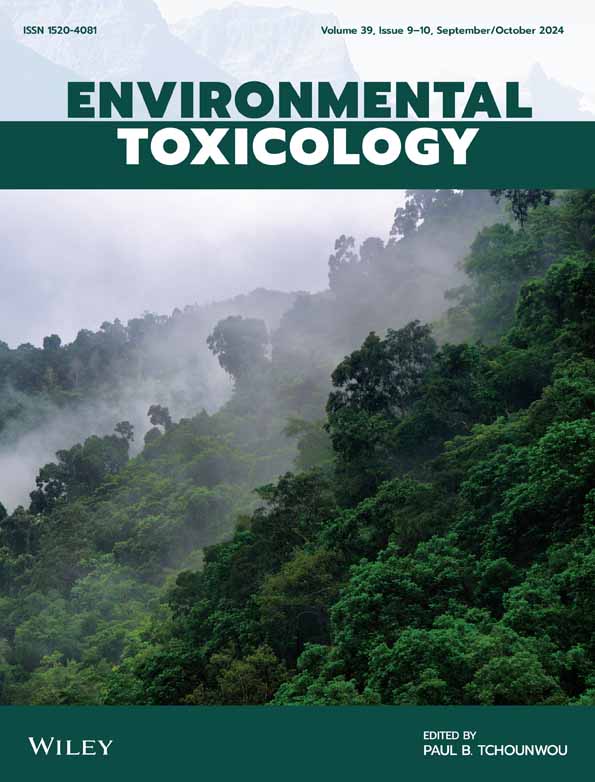不同菌种中元素杂质含量测定及概率风险评估。
IF 3.2
3区 医学
Q2 ENVIRONMENTAL SCIENCES
引用次数: 0
摘要
蘑菇种植和传统的蘑菇采购在世界各地都很普遍。因此,确定食用野生食用菌的重金属暴露风险程度是很重要的。本研究的目的是测定从本文章由计算机程序翻译,如有差异,请以英文原文为准。
Determination of the Elemental Impurity Levels in Different Mushroom Species and Probabilistic Risk Assessment.
Mushroom cultivation and traditional mushroom procurement are widespread worldwide. Therefore, it is important to determine the extent of the risk of heavy metal exposure by consuming wild edible mushrooms. The aim of this study was to determine the levels of four elemental impurities (Cd, Pb, As, and Hg) in edible mushroom species (Macrolepiota mastoidea, Bovista aestivalis, Tricholoma fracticum, Helvella sp., and Rhizopogon roseolus) collected from Çanakkale and Van regions of Türkiye and to investigate potential health risks. For elemental impurity analysis, 0.3 g dry samples of mushrooms collected in Çanakkale and Van provinces between 2022 and 2023 were weighed and analyzed by inductively coupled plasma-mass spectrometry (ICP-MS). Target hazard quotient (THQ) was calculated for non-carcinogenic risk assessment in children and adults, followed by hazard index (HI) for each mushroom. Carcinogenic risk (CR) was determined. Probabilistic total THQ and total CR in children and adults were calculated using the Monte Carlo simulation method. Cd levels in five mushroom species ranged between 11.19-4838.71 μg/kg, Pb levels between 495.43 and 2836.81 μg/kg, As levels between 3267.52 and 25823.07 μg/kg, and Hg levels between 0.00 and 1594.50 μg/kg. The non-carcinogenic risk potential of As level was observed in all mushroom samples. THQ value was found to be greater than 1. These values also affected the HI value in all mushrooms; the latter was also greater than 1. Since As was detected in all mushrooms in the study and the CR value of this risk element was at a level that may pose a potential carcinogenic hazard, a potential health risk in adults and children can be noted. Furthermore, the Monte Carlo simulation showed that the health risks due to elemental impurity accumulation in mushrooms may increase significantly in children and adults, causing serious health problems. Children are more severely affected by elemental impurity concentrations than adults, especially considering their body weight, which makes it necessary to take protective measures.
求助全文
通过发布文献求助,成功后即可免费获取论文全文。
去求助
来源期刊

Environmental Toxicology
环境科学-毒理学
CiteScore
7.10
自引率
8.90%
发文量
261
审稿时长
4.5 months
期刊介绍:
The journal publishes in the areas of toxicity and toxicology of environmental pollutants in air, dust, sediment, soil and water, and natural toxins in the environment.Of particular interest are:
Toxic or biologically disruptive impacts of anthropogenic chemicals such as pharmaceuticals, industrial organics, agricultural chemicals, and by-products such as chlorinated compounds from water disinfection and waste incineration;
Natural toxins and their impacts;
Biotransformation and metabolism of toxigenic compounds, food chains for toxin accumulation or biodegradation;
Assays of toxicity, endocrine disruption, mutagenicity, carcinogenicity, ecosystem impact and health hazard;
Environmental and public health risk assessment, environmental guidelines, environmental policy for toxicants.
 求助内容:
求助内容: 应助结果提醒方式:
应助结果提醒方式:


